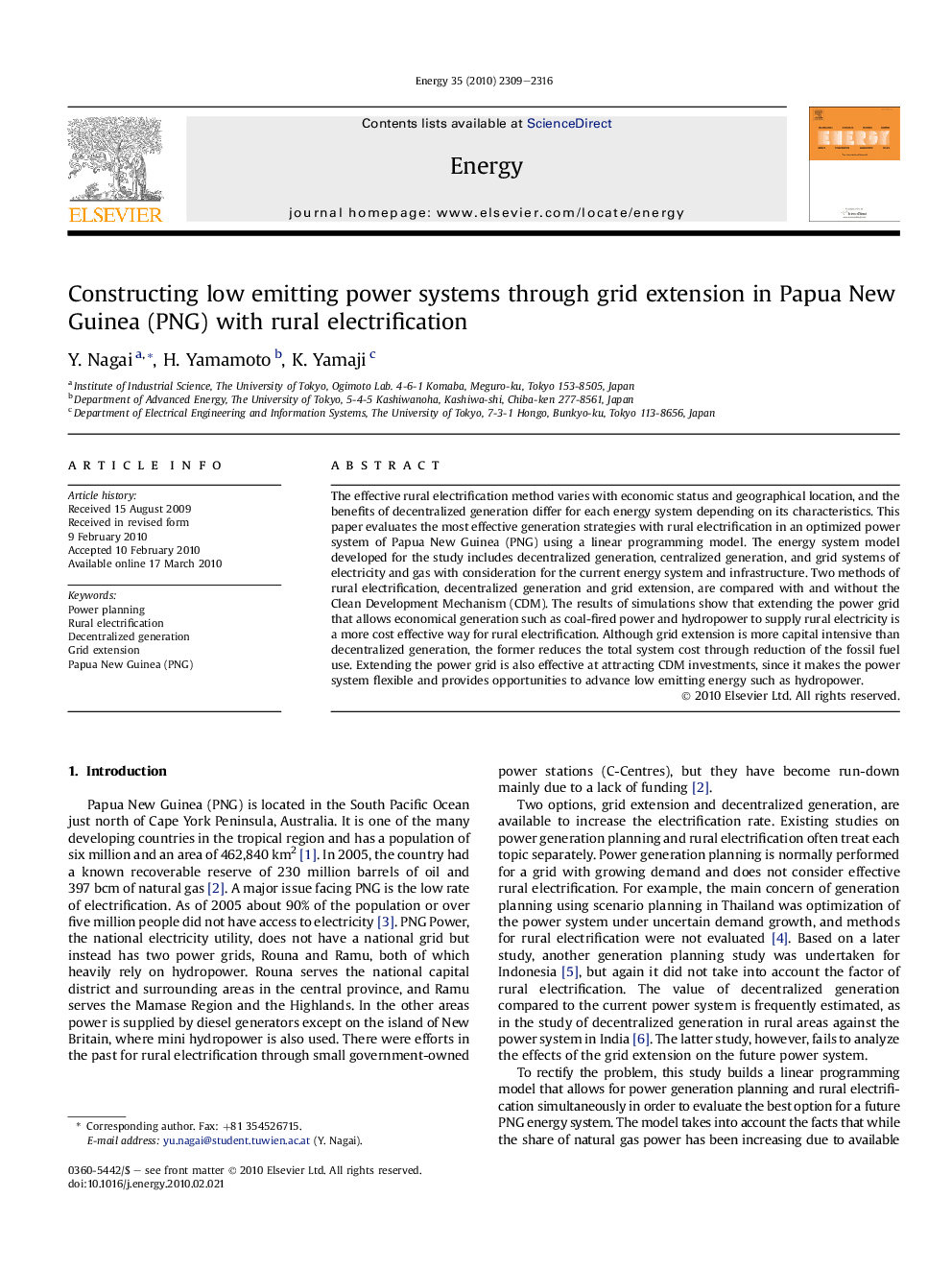| Article ID | Journal | Published Year | Pages | File Type |
|---|---|---|---|---|
| 1735559 | Energy | 2010 | 8 Pages |
The effective rural electrification method varies with economic status and geographical location, and the benefits of decentralized generation differ for each energy system depending on its characteristics. This paper evaluates the most effective generation strategies with rural electrification in an optimized power system of Papua New Guinea (PNG) using a linear programming model. The energy system model developed for the study includes decentralized generation, centralized generation, and grid systems of electricity and gas with consideration for the current energy system and infrastructure. Two methods of rural electrification, decentralized generation and grid extension, are compared with and without the Clean Development Mechanism (CDM). The results of simulations show that extending the power grid that allows economical generation such as coal-fired power and hydropower to supply rural electricity is a more cost effective way for rural electrification. Although grid extension is more capital intensive than decentralized generation, the former reduces the total system cost through reduction of the fossil fuel use. Extending the power grid is also effective at attracting CDM investments, since it makes the power system flexible and provides opportunities to advance low emitting energy such as hydropower.
